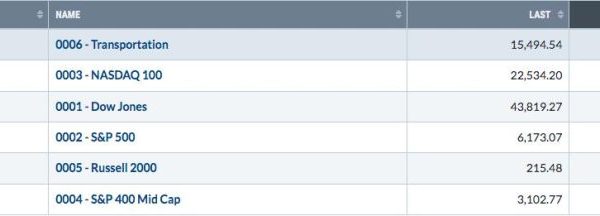Building a successful portfolio of mining companies can be challenging.
It requires a delicate mix of knowledge, timing and patience, as well as an understanding of commodities prices.
At this year’s Vancouver Resource Investment Conference (VRIC), Resource Maven Gwen Preston used examples from the uranium, gold and copper sectors to outline different strategies to use when creating a mining portfolio.
She explained that when starting out, investors should ask themselves a few critical questions: What is happening with the commodity the company is focusing on? What stage is the company’s project at? And what is the investor sentiment?
Answers to these questions can help time an investment in a particular company, and can help investors decide what metals they believe in. Ultimately, this knowledge can help them decide what kinds of stocks to buy.
Uranium stocks to focus on now
Using uranium as her first example, Preston explained how the price has moved over the last several years.
“I love uranium as a bit of a case study for metals investors, because uranium spent six years from 2016 to 2022 working through excess supply. The spot market was oversupplied, it was sloshing around, you couldn’t get any momentum in the uranium spot price,” she told VRIC attendees, adding that there’s no public market for uranium.
“Kazatomprom (LSE:KAP) is responsible for 40 percent of the world’s production. Their cutbacks in 2016 and 2017 helped right the market when it was drowning,” Preston continued. She noted that supply and demand have tightened, especially now that Kazatomprom has said it won’t make guidance this year. “Their return to full production was supposed to help fill the gap that we’re now facing, and now that help has been delayed by several years because they can’t get sulfuric acid. And because they weren’t putting enough money into building their wells, which you really need to do if you want to keep your production going at an in-situ recovery uranium mine,” she said.
The uranium market is also being impacted by a growing geopolitical east-west divide. Preston mentioned that in December 2023, the US House of Representatives passed the Prohibiting Russian Uranium Imports Act, which proposes that the country limit imports of Russian uranium. She suggested this will have a knock-on effect that will not only limit Russian uranium, but will also limit any uranium coming through the port of St. Petersburg.
“It’s literally bifurcating the market. Back in the Cold War era we used to have two uranium spot prices. We had a free country spot price and we had an Eastern Bloc spot price — we are literally going back there,’ she said.
For investors, the takeaway is that uranium is happening now.
‘This is not a speculation market, this is a fundamental market where we don’t have enough uranium,” Preston said, adding, ‘In a market that’s this fundamental and has this much ‘umph’ in it, you can play across the spectrum.’
She noted that while companies with advanced projects have moved ‘significantly,’ pre-discovery explorers haven’t seen much momentum. ‘You can argue that there’s likely some easy upside in the pre-discoveries as the market just decides to really flood into the space and start lifting all the boats,’ Preston said. ‘But the ‘gimme’ is to just own growing US production and the best advanced projects, because those are what this market specifically needs to fix the problem that it’s facing. So those are three examples. There are others. That’s what I’m doing in uranium.’
When to position in gold stocks
Gold has stayed relatively stable in recent years, even with interest rates high. Its performance has been partially attributed to record central bank gold buying, especially in the east — China was 2023’s top purchaser at 225 metric tons.
“Gold has done a very impressive job over the last few years, even if that impressive job has made for a very boring price chart. Nobody gets excited about a sideways chart, (and) we’ve had a sideways chart for quite a few years,” Preston said.
Gold tends to fare well when interest rates are low and the US dollar is weak, and with central banks widely expected to cut interest rates in 2024, many experts are optimistics about its prospects.
Preston sees an opportunity on the horizon for investors who are looking to get a foothold in gold stocks, but noted that it’s impossible to exactly time when they will move.
“Once there’s news that the (US Federal Reserve’s) rate cut is coming, I think gold will make its way higher. But since we don’t know exactly when that’s going to happen, the more cautious approach, rather than diving across the spectrum into gold stocks right now, is potentially to buy the ones that move first and most when gold makes its move,” she said.
Preston suggested first looking to producers of gold, or companies that have mines in development that are close to production, followed by explorers. However, investors may not want to establish their entire position right now.
“Is it next month? Is it six months from now? If we all had unlimited capital, then sure, buy them now that they are super cheap. I’m just being a little bit aware that we don’t all have unlimited capital, so I think it’s just important to be aware that it might not happen tomorrow. I think gold will make a big move this year, but it might take a few months yet before that plays out,” she told the audience at VRIC.
Think long term for copper stocks
From uranium, which is happening now, to gold, which will happen in the near future, Preston moved to copper.
The red metal has longer-term prospects, but has faced major headwinds over the last several years. With that backdrop in mind, Preston pointed to conservative management teams, a disinterested market and a challenging permitting environment as being the most impactful to the copper market.
“Those three factors have pulled together to mean we haven’t been building new copper mines. It’s a really significant thing. We also haven’t been finding big, new copper deposits or pushing them towards development,” she noted.
As excess copper supply works its way through the system and as demand picks up, new projects will be necessary. However, Preston said that out of the 40 top copper development assets, 31 are far from guaranteed. Of those, there are 23 that could produce within 10 years, with nine being blocked and another five facing permitting risks. “That’s just a capture of the amount of challenge there is bringing that copper supply online,” she said.
She sees great potential for copper, but said it’s still a ways off, which means it requires a longer timeline. “We’re not there yet. It’s going to be a great market when it happens, but I don’t know when that’s going to be,” Preston said.
Discovery plays — the exception to the rule
While fundamentals and timing are key to building a portfolio of stocks in the resource sector, Preston also said there are exceptions to the rule, especially when it comes to the discovery phase.
“If you are someone who plays the exploration side of the game, throw everything I just said out the window,’ she said. ‘You can buy the stock (based on) what you think the investment thesis is for that stock.’
Preston added that investors should constantly be re-evaluating this thesis, and emphasized that for her, discovery and pre-discovery stocks are the hardest to pick.
“It’s easy to look at a map that has beautiful colors and looks like it has a bull’s eye, but there’s obviously a lot more than that,’ she said. ‘So own quite a few, don’t put all your eggs in one basket — the actual success rate is not what we wish it was, (though) not through the fault of the explorers. That’s just the nature of trying to find things that you cannot see.’
Investors can seek to minimize risk by financing through warrants, and being aware of low trading volumes. Preston also encouraged investors to take some profits as they happen.
“It’s rare to regret selling in the markets these days. Then just manage your portfolio, and know why you own each stock. If news changes that reason, make sure you either come up with a new reason or exit your position,” she finished.
Investor takeaway
Entering the commodities sector can provide investors with great opportunities, but it’s important to have clear reasons for investing in a particular company. Investors who understand the market dynamics of the metal they’re looking at and have a realistic investment timeline may have an advantage.
As Preston said in her closing words, it’s key to be aware of the risks involved, and not to be afraid to exit an investment if new circumstances change your opinion on the stock.
Securities Disclosure: I, Dean Belder, hold no direct investment interest in any company mentioned in this article.





























